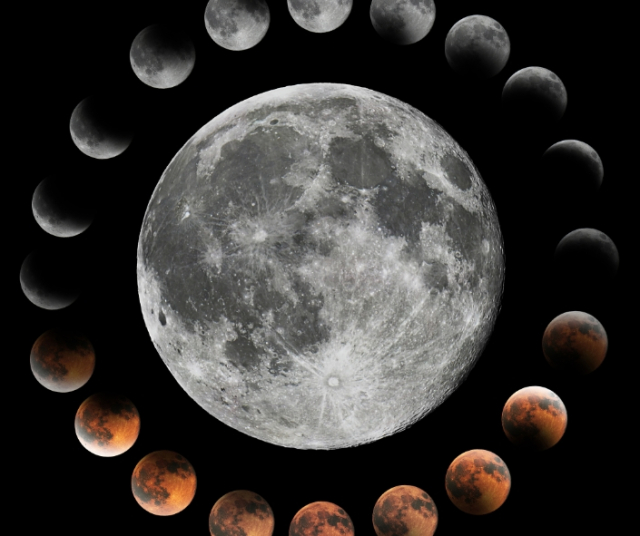The lunar calendar has been a crucial tool for various cultures around the world for centuries. In Spain, the relationship with the moon has been marked by a rich amalgam of traditions, myths and practices that have endured over time.
The Importance of the Moon in Spanish Culture
The connection of Spanish culture with the moon dates back to ancient times, being an essential element that has influenced various aspects of daily life. From language to festivities, the moon has left a deep mark on the cultural fabric of Spain.
Historically, the moon has been considered a source of mystery and fascination. Its phases, cycles and night glow have inspired numerous myths and legends that have enriched the country's cultural narrative. The figure of the moon, personified in deities such as Selene, has been worshiped and revered throughout the centuries, symbolizing the duality of light and darkness.
The Lunar Calendar: A Link with Nature
The lunar calendar is built around the phases of the moon, which directly affect the cycles of nature. In 2024, the lunar year will be filled with exciting astronomical events, such as eclipses and supermoons, that will capture the imagination of stargazers and hobbyists alike.
Phases of the Moon in 2024
The year 2024 will witness a fascinating lunar journey, where the phases of the moon will unfold their celestial dance over the skies of Spain.
New Moon (January 2, 2024): The year will begin with the delicate silhouette of the new moon, a time of renewal and new beginnings. The darkness of the night will allow a clear view of the stars, creating an ideal celestial canvas for astronomical observers throughout Spain.
Waxing Quarter (January 9, 2024): As the moon begins to emerge on its celestial path, we will reach the crescent phase. This period marks the beginning of a lunar growth cycle, symbolizing progress and expansion in the cyclical nature of the cosmos.
Waxing Gibbous (January 16, 2024): The waxing gibbous moon will appear with greater luminosity, offering illuminated nights that can be appreciated in all its majesty. This is a favorable time to reflect on personal goals and aspirations, taking advantage of the rising energy of the moon.
Last Quarter (January 23, 2024): Upon reaching the last quarter, the moon will reveal a waning shape, marking the decline of its lunar cycle. This period invites reflection and liberation, symbolizing the completion of projects and preparation for new phases to come.
Full Moon (January 31, 2024): The first month of the year will culminate with the splendid full moon, illuminating the Spanish skies in its maximum plenitude. This moment symbolizes the fullness and culmination of cosmic energies, offering a celestial spectacle that has inspired poets, artists and observers since time immemorial.
Lunar Influence on Spanish Agriculture
Agriculture in Spain has historically been linked to the lunar calendar. Farmers have used the moon as a guide to determine the best times to sow, cultivate, and harvest. We will examine traditional agricultural practices related to the moon and how they persist today.
Lunar Traditions in Local Festivities
Each region of Spain has its own festivities and traditions, many of which are directly related to the moon. From Easter celebrations to local festivities, we'll look at how the lunar presence is reflected in the rich variety of cultural traditions.
Eclipses and Supermoons in 2024: Featured Astronomical Events
The year 2024 promises to be an exciting time for astronomy enthusiasts in Spain, as notable astronomical events loom that will capture the imaginations and hearts of those who gaze into the night sky. Eclipses and supermoons, celestial phenomena that have fascinated humanity throughout history, will be presented as unforgettable cosmic spectacles.
Penumbral Lunar Eclipse (May 15, 2024): The first of the notable events will be a penumbral lunar eclipse. In this phase, the moon will slide through the penumbra of Earth's shadow, creating a subtle darkening of its surface. Although this phenomenon may go unnoticed by some observers, it offers a unique opportunity to reflect on the celestial interaction between our planet and its satellite.
Annular Solar Eclipse (May 30, 2024): At the end of May, the Spanish skies will witness an annular solar eclipse, a spectacular event in which the moon will partially block the sun's light, creating a "ring of fire." This astronomical phenomenon will provide an impressive spectacle for those in the path of the eclipse.
Full Supermoon (June 14, 2024): In June, a full supermoon will light up the night skies. This phenomenon occurs when the moon is at its closest to Earth, appearing larger and brighter than usual. The full supermoon will be an impressive celestial event that will invite observers from all over Spain to admire the majesty of the natural satellite.
Total Lunar Eclipse (November 8, 2024): The highlight of the year will be a total lunar eclipse. During this event, the moon will completely immerse itself in the Earth's shadow, taking on a reddish hue known as a "blood moon." This phenomenon, loaded with symbolism and mysticism, will offer a unique experience for night watchers throughout Spain.
Lunar Myths and Legends in Spain
The moon has been the protagonist of countless myths and legends in Spanish culture. From the story of the lunar goddess Selene to folk tales passed down from generation to generation, we will explore the narratives that have shaped the perception of the moon in Spanish tradition.
The Moon in Spanish Art and Literature
Spanish artists and writers have found an inexhaustible source of inspiration in the moon. From painting to poetry, we will analyze how the moon has been represented throughout the history of art and literature in Spain.
Lunar Calendar and Astrology: A Contemporary Perspective
As we move into the 21st century, astrology and the connection with the moon has seen a resurgence. We will explore how contemporary astrological practices have integrated the lunar calendar into the daily lives of people in Spain.
